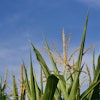
The U.S. Department of Agriculture's latest export sales report for the week ending February 6, 2025, paints a complex picture of the nation's agricultural trade landscape. The data highlights significant movements across key commodities, reflecting the dynamic nature of global agricultural markets.
Wheat exports emerged as a standout performer, with net sales of 569,600 metric tons for the 2024/2025 marketing year, marking a 30% increase from the previous week and a 45% rise from the prior 4-week average. More impressively, wheat exports surged to 577,300 MT, up 85% from the 4-week average. Mexico led the purchases with 127,600 MT, followed by South Korea and the Philippines.
In stark contrast, soybean exports faced significant headwinds, with net sales of 185,500 MT for 2024/2025 showing a 52% decrease from the previous week and a dramatic 74% drop from the 4-week average. While China remained the largest buyer, significant reductions for unknown destinations offset gains, indicating potential shifts in global demand patterns.
Corn sales also showed strength, with net sales of 1,649,000 MT for 2024/2025, up 12% from the previous week and 20% from the 4-week average. Japan was the top buyer, securing 459,400 MT, with South Korea and Mexico following closely. Notably, Mexico made a significant forward purchase of 330,000 MT for the 2025/2026 marketing year, suggesting confidence in future U.S. corn supplies.
Cotton exports hit a marketing-year high, with Upland cotton exports reaching 260,900 running bales, up 18% from the previous week and 27% from the 4-week average. Vietnam, Pakistan, and Turkey were the primary destinations, indicating strong demand from Asian textile manufacturers.
Rice exports also achieved a marketing-year high of 127,500 MT, surging 96% from the previous week. Iraq, Venezuela, and Honduras were the top buyers, reflecting diverse global demand for U.S. rice.
The report also noted declines in soybean oil sales and Pima cotton exports, both hitting marketing-year lows. Soybean oil net sales saw a reduction of 2,800 MT, while Pima cotton exports fell to 1,100 running bales, highlighting the volatility in certain agricultural subsectors.
This mixed performance across commodities underscores the complex challenges and opportunities facing U.S. agricultural exporters in the global marketplace. Factors such as changing international demand, price competitiveness, and geopolitical considerations continue to shape the export landscape for American farmers and agribusinesses.

















